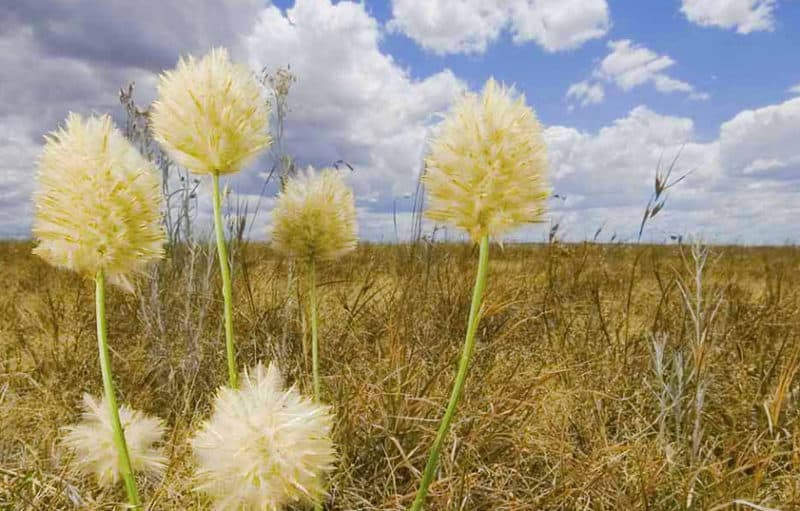PARK WATCH December 2018 |
The NSW National Parks and Wildlife Service banned its ecologists from attending a November conference on the impacts of Kosciuszko’s feral horses. That didn’t compromise the groundbreaking event, reports Park Protection Campaigner Phil Ingamells.
Pity the frail hatchlings of the stocky galaxias. The last refuge on earth for this critically endangered native fish is just three kilometres of a small mountain stream, above a trickling waterfall in the headwaters of Tantangara Creek in Kosciuszko National Park.
Many native fish lay their eggs in clear spaces between the stones in a healthy creek’s rocky bottom, sometimes fanning the eggs to remove any silt and increase available oxygen. But galaxias species are inattentive parents, and a long incubation period leaves the eggs particularly vulnerable.
Feral horses are now abundant in the Tantangara Creek catchment, with many well-entrenched horse crossings in the critical three-kilometre stretch of this stream. The bank structure is damaged, and fine gravels and silt have filled the gaps in the cobbles and boulders of the stream substrate, especially downstream of each crossing.
It’s not just the eggs that suffer, as the adult fish also shelter in gaps between the rocks. Their habitat is now seriously degraded by horses.
This tale of the stocky galaxias emerged from work by a University of Canberra team. It featured in one of 20 remarkable presentations at a recent gathering of alpine scientists brought together by the Australian Academy of Science with Deakin University and the Australian National University (ANU).
The conference was triggered by the NSW government’s extraordinary decision to give Kosciuszko’s feral horse population heritage protection under state legislation, ignoring decades of scientific evidence. The ten-hour event showcased the remarkable assemblage of evidence pointing to the damage inflicted by horses in the Australian Alps National Parks – a grouping of all mainland Australia’s alpine parks, including Kosciuszko and our Alpine National Park.
While much of the research was done and dusted decades ago, and it has long been established that all hard-hooved invaders – deer, goats, pigs, cattle and horses – have damaged the high country, many presentations opened new insights.
Drones are now employed by the University of NSW to produce high resolution 3D digital models to accurately monitor streambank erosion by horses along the Ingeegoodbee River in the Pilot Wilderness area of Kosciuszko. So far this research has shown that streambank erosion by horses can release as much as 3.5 tonnes of sediment annually from just a 50 metre stretch of that river.
This gave added credence to a presentation from both ANU and Charles Sturt University. The Australian Alps produce about 29 per cent of the total water yield of the Murray-Darling Basin’s one million square kilometres, even though the alpine region occupies just 1 per cent of the basin area. Feral horse trampling and selective grazing exposes alpine soils to frost heave and erosion, and opens channels through moss beds and peat bogs, drying them and leaving them vulnerable to fire and further erosion.
This in turn reduces the water-holding capacity of the high plains, producing heavier, pulsed run-offs.
In the 1960s cattle were removed from Kosciuszko so the Snowy Hydro Scheme’s infrastructure would not face siltation problems. The rapidly growing horse population is now a re-introduced threat to that original infrastructure and, of course, to the planned Snowy Hydro 2 development.
Two presentations on the spectacular, and also critically endangered, northern corroboree frog drew a clear line between hope and despair.
This remarkable animal has been seriously affected by that curse of many frogs – chytrid fungus – but a couple of highly successful off-site breeding programs are now working well. And a long-standing feral horse culling program in the ACT’s Namadgi National park has allowed the regeneration of mossbeds and their elevated pools, the essential habitat for the frog and an ideal place for their re-introduction.
Over the border in NSW, however, horses have significantly trashed the adjacent peat beds, compromising the re-establishment of frog populations there. Frustratingly, the horse protection regime in NSW is causing headaches for the ACT park agency, as they allocate more and more resources to control cross-border invaders.
Importantly, not all horse impacts were logged in the high elevation areas. A group of ANU researchers looked at impacts in the white cypress pine/white box dry woodlands along the Snowy River around the border between NSW and Victoria. They demonstrated rapidly growing damage from horses and deer – but mainly, so far, from horses.
Other research pointed out that similar horse impacts were recognised globally. Many other papers were also presented, but two came from interesting social perspectives.
Alpine geographer Deidre Slattery pointed out that it’s only in recent years that any sizeable support for the ‘brumby heritage’ idea has surfaced. Indeed throughout the 19th century, high country horses were a pest to be eliminated, largely because they were a threat to cattle and sheep grazing.
And well-seasoned alpine ecologist Dick Williams said that in the tradition of Alec Costin, pretty much the undisputed father of alpine ecology, scientists should hold governments and agencies to account when they act contrary to clear evidence. Science “can, and should, be activist”.
This event held to that great tradition. The Kosciuszko Science Accord was enthusiastically endorsed by the conference.
Did you like reading this article? Want to be kept up to date about nature issues in Victoria? Subscribe to our email updates.
You can also receive our print magazine Park Watch four times a year by becoming a member. Find out more here.
